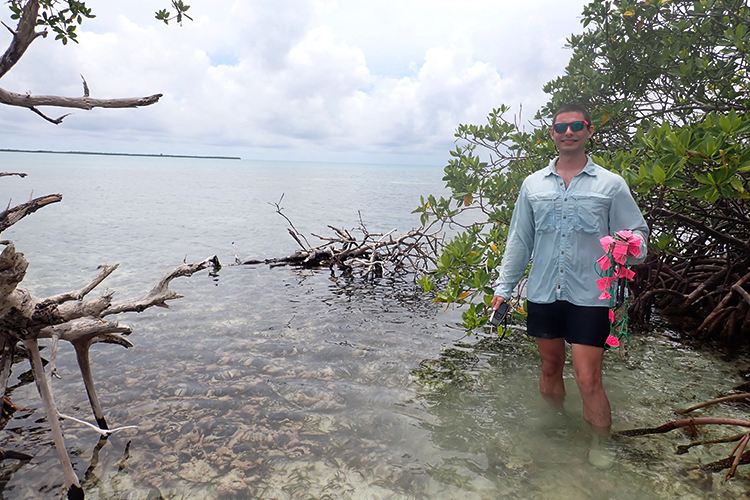
Samford geography professor Jordan Cissell is part of a Smithsonian Institution and Mesoamerican Reef Fund project providing powerful tools and training to help conserve the Mesoamerican Reef (MAR) ecoregion, encompassing the Caribbean coasts of Belize, Mexico, Guatemala and Honduras.
The stakes are high for communities in the region. “The livelihoods of more than 2 million people are directly or indirectly connected to the mangrove, seagrass, and coral reef ecosystems of the MAR,” Cissell explained. “These ecosystems provide habitat for commercial and subsistence fisheries like lobster, conch, and shrimp. They also support activities like snorkeling, diving, birdwatching and sportfishing that bring in more than 12 million tourists and millions of tourism dollars each year.” He said mangroves also help protect coastal communities from destructive storms and mitigate climate change by sequestering atmospheric carbon.
Previous efforts to map the ecoregion lacked the consistent methodology and high level of detail required to determine the rates and locations of losses, so Cissell and his colleagues–Michael Steinberg (University of Alabama,) Steven Canty (Smithsonian) and Lorae’ Simpson (Florida Oceanographic Society)–have created a Google Earth Engine algorithm that generates high-resolution maps based on data collected in many seasons of field work.
The group used the new system to complete mangrove maps for each of the MAR countries this spring and summer. It will map the reefs and seagrasses later, and might expand into Costa Rica, the U.S. Virgin Islands, Puerto Rico and Ecuador. First, it will develop workshops to help people in the region use the mapping system. “Because Google Earth Engine is free for anyone to use, our code empowers local stakeholders to make their own on-demand maps of mangrove trends, threats and successes within their own study areas,” Cissell said.
Cissell will discuss the project for a special research talk– Mapping the Past, Present, and Future of Caribbean Mangrove Forests with GIS and Remote Sensing–Oct. 6 at 3 p.m. in Samford’s Brock Forum, Dwight Beeson Hall. He also will introduce students to the importance of such work via a new course in spring, 2022. “Human-Environment Relationships in the 21st Century” will gather insights from geography, environmental science, conservation, political science, economics, public policy, sociology and other disciplines to discuss pressing human-environment issues such as the COVID-19 pandemic and climate change, and explore possible solutions.
